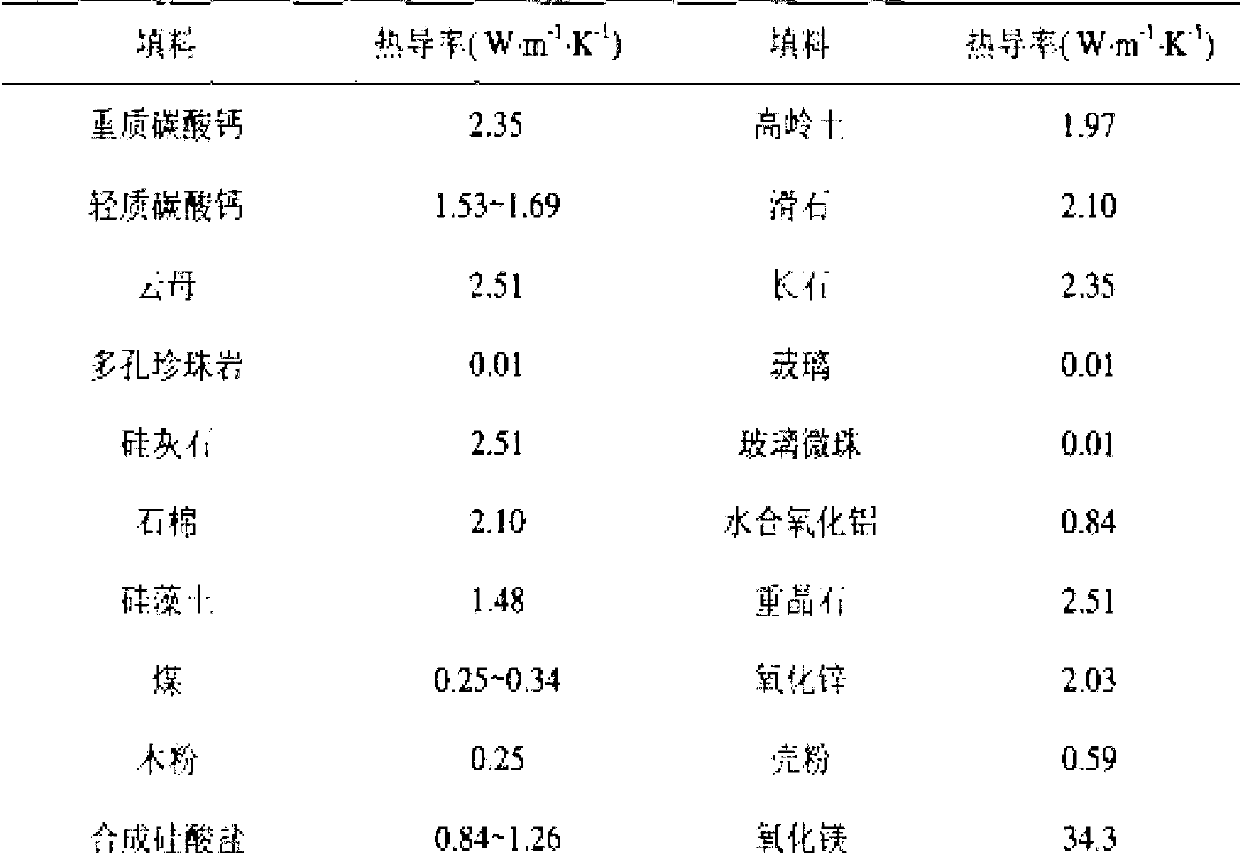Ethylene propylene diene monomer heat-conducting rubber
A technology of EPDM rubber and thermally conductive rubber, which is applied in the field of nano-new materials and can solve problems such as poor thermal conductivity, reduced mechanical properties, and high production costs
- Summary
- Abstract
- Description
- Claims
- Application Information
AI Technical Summary
Problems solved by technology
Method used
Image
Examples
Embodiment 1
[0047] Embodiment 1: In this embodiment, the high thermal conductivity nanometer rapid vulcanization composite EPDM rubber, the content ratio of each raw material component is as follows in parts by weight:
[0048] 240-300 parts of EPDM rubber,
[0049] Anti-aging agent 3-5 parts,
[0050] 60-100 parts of carbon black,
[0051] 1-3 parts of sulfur,
[0052] Accelerator 2-4 parts,
[0053] 5-9 parts of plasticizer,
[0054] 60-90 parts of paraffin oil,
[0055] 10-18 parts of inorganic active agent,
[0056] Dispersant 2-5 parts.
[0057] And it is prepared by the following steps:
[0058] The first step, synthetic rubber: the above raw materials are synthesized into rubber through an internal mixer;
[0059] The second step, molding: the synthetic rubber is molded by an open mill;
[0060] The third step, vulcanization: Put the formed rubber into the mold in the vulcanizer, and the pressure range is 150-210kgf / ㎝ 2 , heating up to 220-230°C for 80-100 seconds for vul...
Embodiment 2
[0061] Embodiment 2: The rubber dispersant is a reagent that promotes the uniform dispersion of material particles in the rubber medium to form a stable suspension. The rubber dispersant used in the embodiments of the present invention is one or more of the following reagents: triethylhexyl phosphoric acid, sodium lauryl sulfate, methyl amyl alcohol, cellulose derivatives, polyacrylamide, ancient Er gum, fatty acid polyethylene glycol ester.
Embodiment 3
[0063] The anti-aging agent used in one embodiment of the present invention is: 6-ethoxy-2,2,4-trimethyl-1,2-dihydroquinoline. Its trade name is antiaging agent AW. Antiaging agent AW is a brown viscous liquid, and the pure product is a light brown viscous liquid. Non-toxic, the specific gravity is 1.029~1.030 (25°C), and the boiling point is 169°C. Soluble in benzene, acetone, dioxyethane, carbon tetrachloride, solvent gasoline and ethanol; insoluble in water. Stable in storage. It is a special anti-ozone anti-aging agent, and it also has a protective effect on flex cracking and thermal oxygen aging. Especially suitable for products used under dynamic conditions. No frost, polluting, not suitable for light-colored products. When the amount is 1-2 parts, it has little effect on vulcanization, and when it is increased to 3 parts, it will significantly promote vulcanization, and the amount of promotion should be appropriately reduced during use.
[0064] The anti-aging age...
PUM
| Property | Measurement | Unit |
|---|---|---|
| Softening point | aaaaa | aaaaa |
| Freezing point | aaaaa | aaaaa |
| Boiling point | aaaaa | aaaaa |
Abstract
Description
Claims
Application Information
 Login to View More
Login to View More - R&D
- Intellectual Property
- Life Sciences
- Materials
- Tech Scout
- Unparalleled Data Quality
- Higher Quality Content
- 60% Fewer Hallucinations
Browse by: Latest US Patents, China's latest patents, Technical Efficacy Thesaurus, Application Domain, Technology Topic, Popular Technical Reports.
© 2025 PatSnap. All rights reserved.Legal|Privacy policy|Modern Slavery Act Transparency Statement|Sitemap|About US| Contact US: help@patsnap.com



